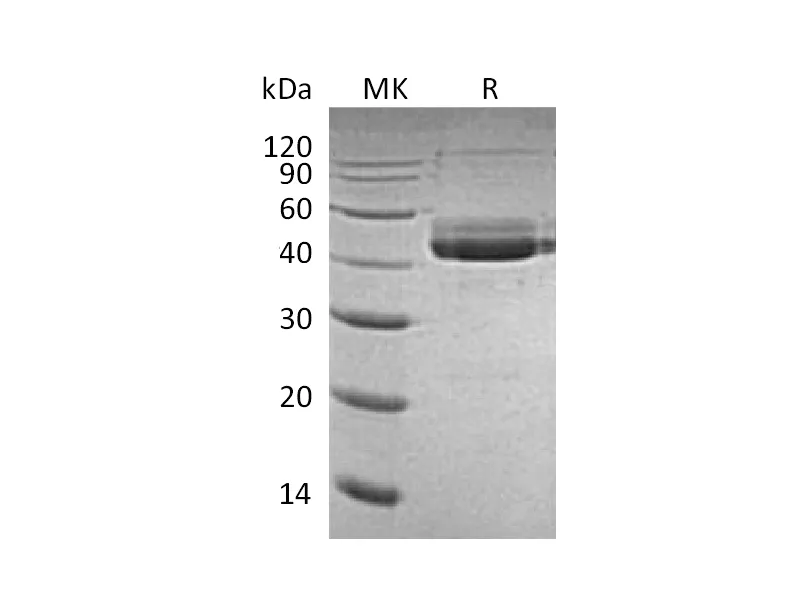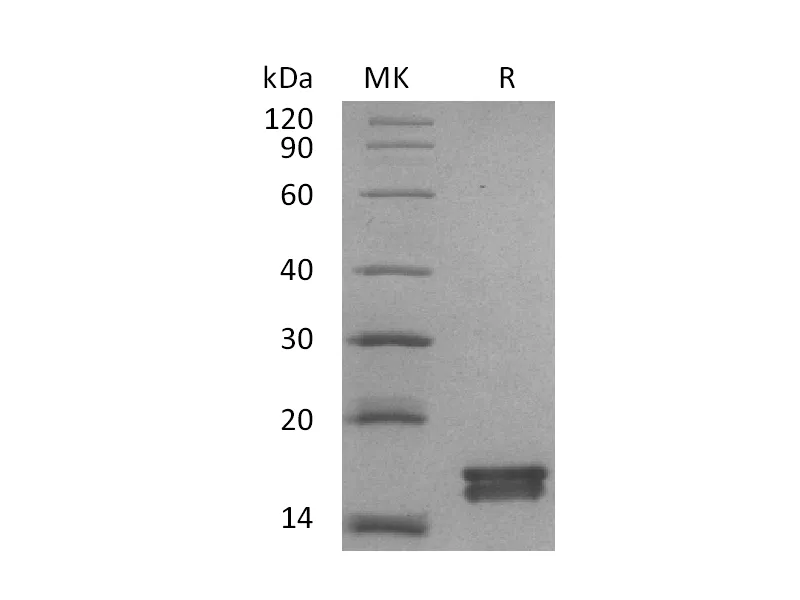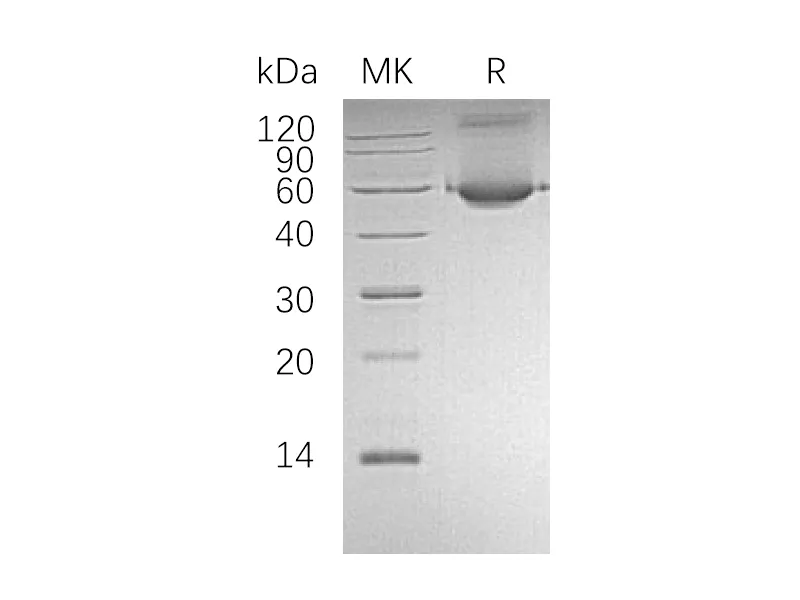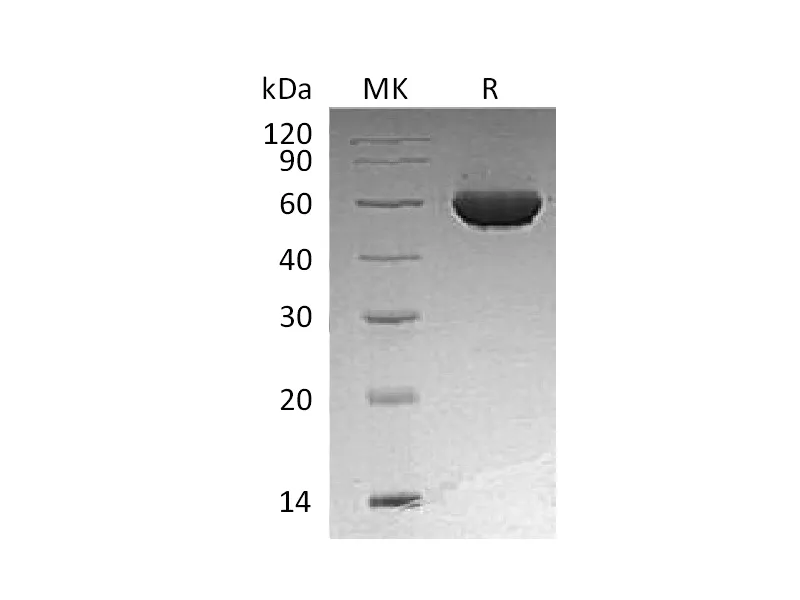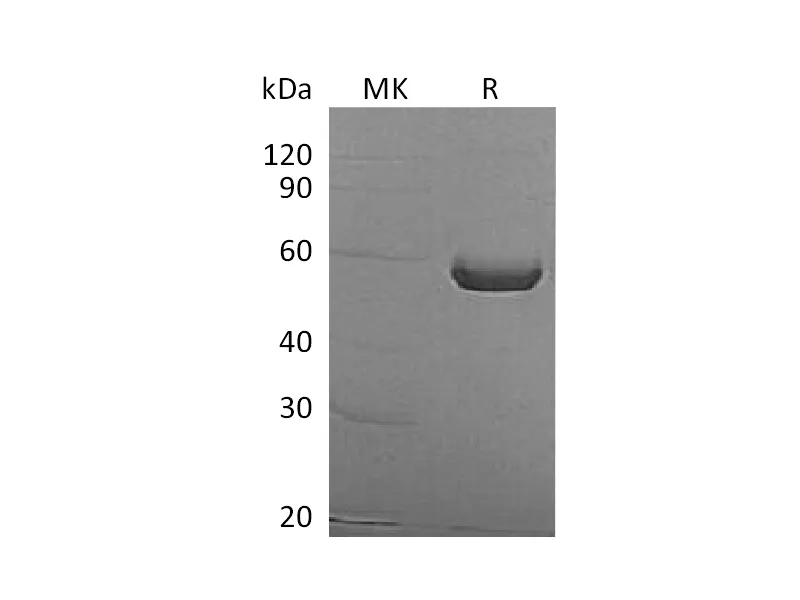| Name | Recombinant Human CD3E (C-Fc) |
| Purity | Greater than 95% as determined by reducing SDS-PAGE |
| Endotoxin level | <1 EU/µg as determined by LAL test. |
| Construction | Recombinant Human T-cell Surface Glycoprotein CD3 Epsilon Chain is produced by our Mammalian expression system and the target gene encoding Asp23-Asp126 is expressed with a human IgG1 Fc tag at the C-terminus. |
| Accession # | P07766 |
| Host | Human Cells |
| Species | Human |
| Predicted Molecular Mass | 38.7 KDa |
| Buffer | Lyophilized from a 0.2 μm filtered solution of PBS, pH 7.4. |
| Form | Lyophilized |
| Shipping | The product is shipped at ambient temperature.Upon receipt, store it immediately at the temperature listed below. |
| Stability&Storage | Store at ≤-70°C, stable for 6 months after receipt.Store at ≤-70°C, stable for 3 months under sterile conditions after opening. Please minimize freeze-thaw cycles. |
| Reconstitution | Always centrifuge tubes before opening.Do not mix by vortex or pipetting.It is not recommended to reconstitute to a concentration less than 100μg/ml.Dissolve the lyophilized protein in distilled water.Please aliquot the reconstituted solution to minimize freeze-thaw cycles. |
Alternative Names
T-Cell Surface Glycoprotein CD3 Epsilon Chain; T-Cell Surface Antigen T3/Leu-4 Epsilon Chain; CD3e; CD3E; T3E
Background
T-Cell Surface Glycoprotein CD3 ε Chain (CD3ε) is a single-pass type I membrane protein. CD3ε contains 1 Ig-like (immunoglobulin-like) domain and 1 ITAM domain. CD3ε is a polypeptide encoded by the CD3E gene on chromosome 11 in humans. The T cell receptor-CD3 complex (TCR/CD3 complex) is involved in T-cell development and several intracellular signal-transduction pathways. This complex is critical for T-cell development and function, and represents one of the most complex transmembrane receptors. The T cell receptor-CD3 complex is unique in having ten cytoplasmic immunoreceptor tyrosine-based activation motifs (ITAMs). TCR/CD3 complex plays an important role in coupling antigen recognition to several intracellular signal-transduction pathways.
Note
For Research Use Only , Not for Diagnostic Use.

